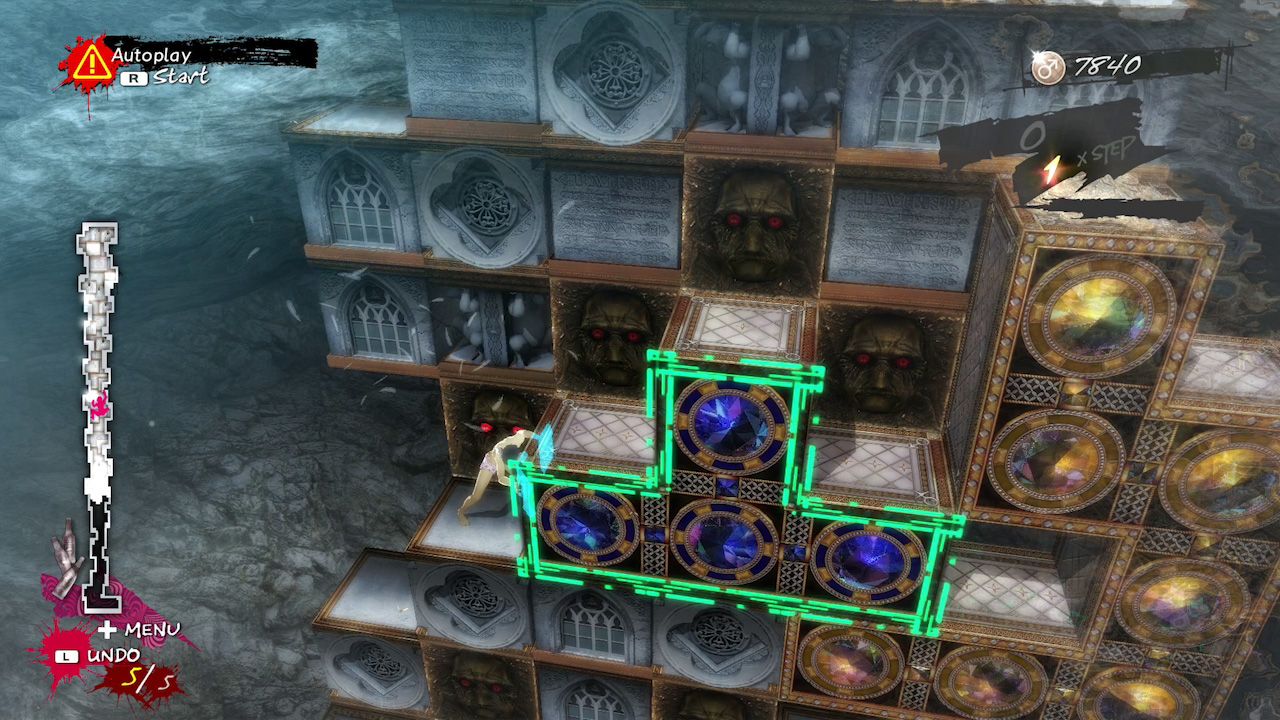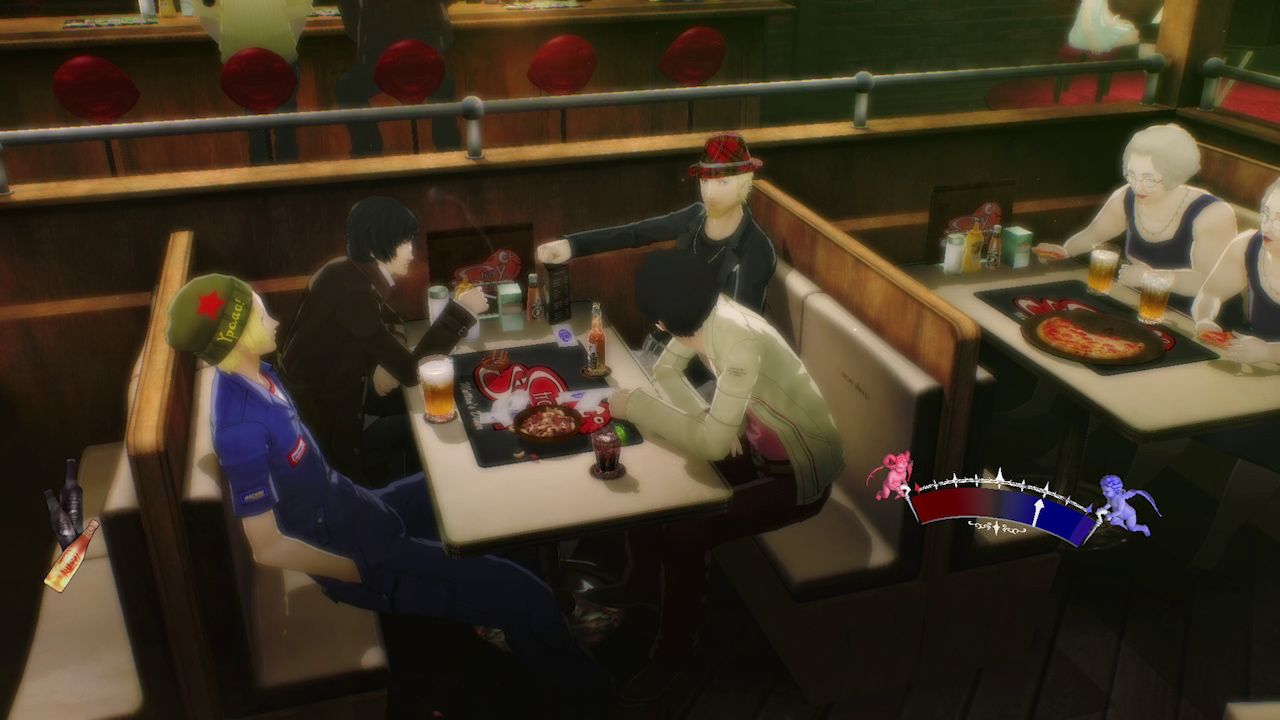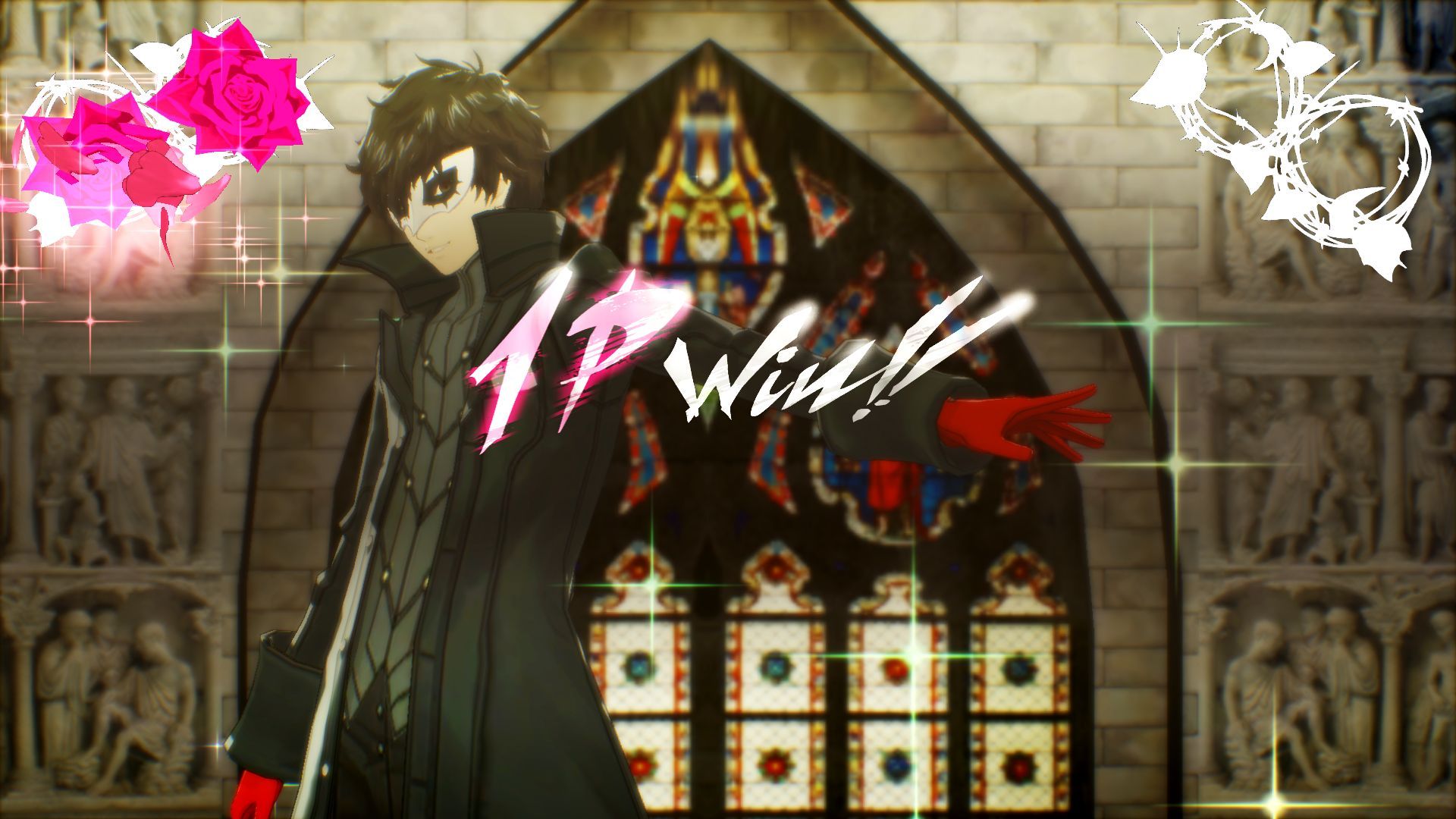The Switch port of Catherine: Full Body is pretty straightforward.
It’s the same updated and remixed version of Atlus’ cult classic puzzle game that released last year for the PlayStation 4, but this time packed in with all of its DLC and a few minor extras exclusive (for now) to the Switch.
For the most part, the game looks on par with its PS4 counterpart, and is right at home on Nintendo’s console/handheld hybrid. On top of that, the added portability is a really nice feature to have 1) because the game’s multiplayer and competitive scene could stand to benefit greatly from it, and 2) if we’re being honest here, handheld mode will save you some awkward conversations if you have family in the house.
The TL;DR before getting into the details: Catherine: Full Body’s Nintendo Switch version is a solid port and a perfectly viable way to play one of the more bizarre games of the past decade.
For the uninitiated, or even those that need a refresher, Catherine was originally released in 2011 for the PS3 and Xbox 360, and was developed by Atlus’ internal P-Studio, the team in charge of the now very popular Persona series.
The game was...weird.
First and foremost, Catherine was a puzzle game, a departure from the turn-based RPGs the team, and Atlus as a whole, had become known for. It was also a game that tackled some pretty mature subject matter, presenting a story about romance and relationships that asked its protagonist, and by extension the player, what they ultimately wanted out of life and a partner.
It was out there, touching on themes that video games don’t often explore, definitely not in a way as head on as this one. And while it didn’t navigate everything perfectly, Catherine offered a pretty unique experience, one that had the charm, wit, and thoughtfulness to leave a lasting impression on many who played it.
Eight years later, and with a new team at Studio Zero (composed of Catherine and Persona 3-5’s director Katsura Hashino and other series veterans) at the helm, Full Body came along and expanded on all of that.
You play as Vincent Brooks, an indecisive 32-year old at a major crossroads. After so many years in a steady relationship, and beginning to feel pressure from family and friends, his girlfriend, Katherine, wants to take the next step as a couple. At the same time, another woman, Catherine (coincidentally enough), suddenly comes into his life, leading to an inciting incident that forces Vincent to decide who he truly wants to be with.
Though the original game’s story remains largely intact, Full Body presents another option for Vincent, a mysterious but overwhelmingly supportive amnesiac named Rin, who is worked into the pre-existing plot right from the outset and fits into it all pretty naturally despite not being there the first time around.
Each of the three romance options have their own distinct personality, and represent contrasting sets of values and ideals within Vincent’s mind. Katherine, driven and authoritative, represents order. And Catherine, spontaneous and outgoing, represents freedom. Rin, meanwhile, with an endlessly encouraging and accepting spirit, creates a different, more open-minded path that doesn’t fit into any particular mold.
Like the original, Catherine: Full Body is a game of two halves. The Stray Sheep is one side of the coin, a bar that Vincent visits nightly where you can drink, talk to regulars, answer texts and calls, maybe learn a tidbit or two of trivia, and even try your hand at a dusty old arcade machine.
The bulk of Vincent’s interactions here help form the direction of the story and where he’s ultimately headed. Lending an ear to one of Vincent’s friends or a stranger presents increasing opportunities to learn more about them, and you can make choices in dialogue that shape Vincent’s character and could potentially help guide those around him through their own circumstances. Likewise, how you approach texts and calls from either of Katherine, Catherine, or Rin factors into who he grows loyal to.
Time spent at the Stray Sheep might sound familiar to anyone who has played any of the recent mainline Persona games (i.e. 3-5), and that’s because it largely is a streamlined version of the series’ social link/confidant mechanic. But whereas Persona has a meter representative of a relationship’s strength for each character that fills up with the more time spent with them, Catherine has one internal meter for Vincent that can sway toward freedom or order (or stay straight in the middle) based on your decisions.
The other side, and Catherine’s core gameplay, is the nightmare world. When Vincent goes to sleep each night, he and other men he comes into contact with are taken into the same recurring dream, where they all appear as sheep to one another within the same tower and are given the same ultimatum: reach the top or die.
To stay alive, Vincent must push, pull, stack, drop, and climb up a series of blocks to reach each night’s summit, all while the ground he stands on continually falls out from under him. It’s a simple hook at face value, but one that can get incredibly deep.
Every night serves at its own stage, with each presenting new types of blocks, obstacles, and layouts to deal with. That said, you’re also shown at least a couple new climbing techniques to utilize per night; ones that will help you not only conquer those challenges, but also make you a more efficient climber.
Each stage consists of several floors to ascend, with the final floor always leaving you to escape a boss that is the physical manifestation of Vincent’s fears. Each looks like they walked straight out of a horror game and into this one.
You can get by on quick thinking and improvising, but the game will reward you for remembering all the techniques and figuring out when and where to pull them out. However, it does expect you to remember at least some of them, especially in the later stages and the higher the difficulty. Otherwise, you’ll be in for a whole lot of trial and error the first and even second time through the latter half of the game.
Practice makes perfect when it comes to climbing in Catherine, and that experience doesn’t go to waste once the credits roll.
More challenges await in the game’s additional modes. Babel, for instance, offers several extra semi-randomly generated stages (of varying difficulty) to climb either alone or with a friend.
You can also test your skills against other players in the game’s head-to-head Colosseum, a local multiplayer mode that spawned a dedicated competitive scene when the original released and was strengthened by Full Body finally taking it online. And now thanks to being on the Switch, Catherine’s multiplayer can be played pretty much anywhere with anyone using the split Joy Cons (though that’s far from a recommended control scheme) or wireless LAN connectivity between two systems.
Plus, because all of Full Body’s DLC is included, you can play these modes using anyone from the main cast or even Persona 5’s Joker, with every character having their own commentary call outs (Joker in particular gets the rest of the Phantom Thieves cheering him on).
The DLC also contains various voices for Catherine that can be swapped out at any time in the story should you want to play it with Japanese audio (the Switch version comes with three extra voiceover options from Japan’s Persona series VAs) and a pair of glasses that Vincent can put on that...uh...yeah...
Catherine: Full Body on the Switch is a complete port of a strange but worthwhile game, and stands to reach even more people now that it’s on another rapidly growing platform.
Before wrapping up, I’d be remiss if I wrote about the Switch port of Catherine: Full Body and didn’t go over how encouraging it is that it even exists, even if it’s only slight.
Atlus might be the most stubborn third-party company in video games when it comes to bringing its titles to other platforms. The Persona series is more popular than it has ever been, but most of its older entries have been left behind on obsolete systems, and Persona 5 has been kept exclusive to the PlayStation 4. Shin Megami Tensei of late has been exclusive to Nintendo. In fact, a lot of Atlus' games in the past decade have been kept to either PlayStation or Nintendo and nothing else, despite fan outcry.
But last year Sega (Atlus’ parent company) pushed to release the original Catherine on PC, Persona 4 Golden just came to Steam after being trapped on the nearly forgotten PlayStation Vita for years -- Atlus themselves even ported it over -- and now Catherine: Full Body has an additional home on the Switch.
These releases aren’t surefire proof just yet that Atlus is fully embracing other platforms, but an optimist would say they’re all good signs.
And Full Body runs on Persona 5’s engine, just saying.



